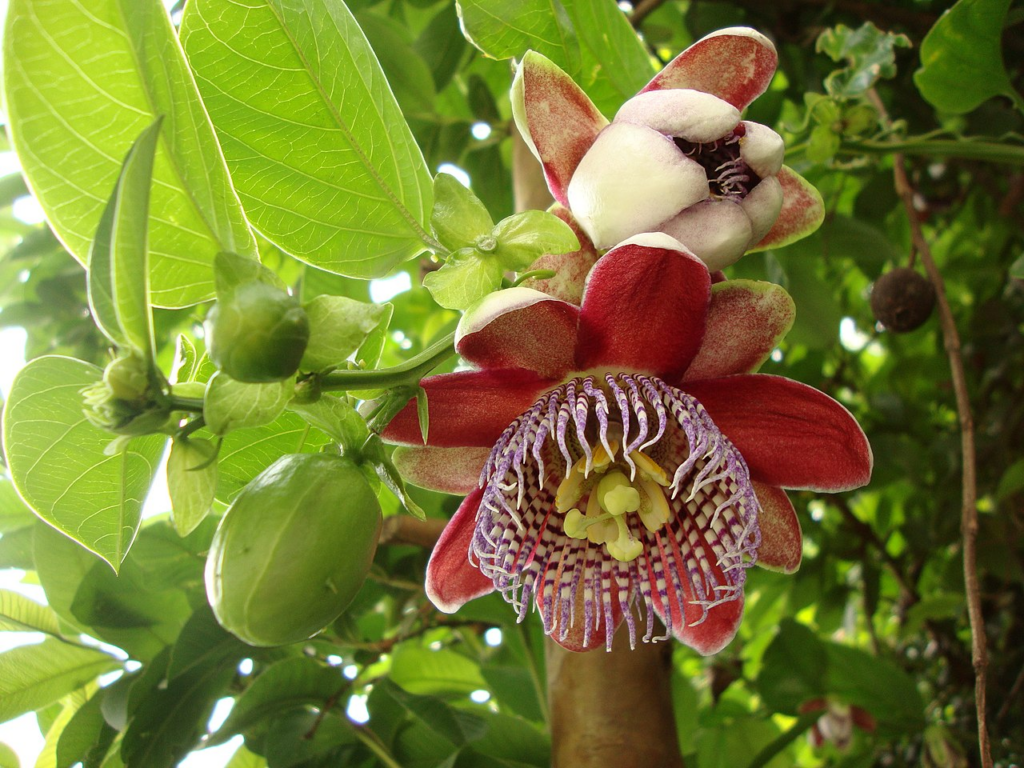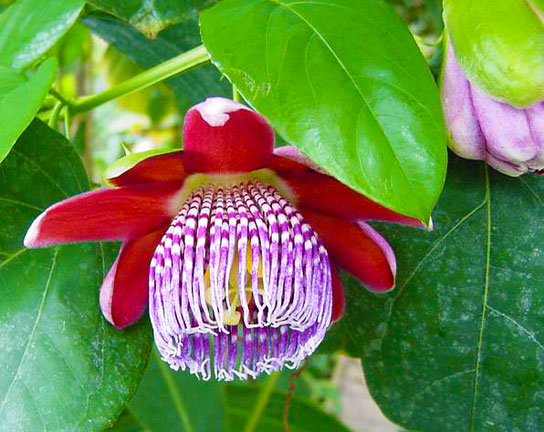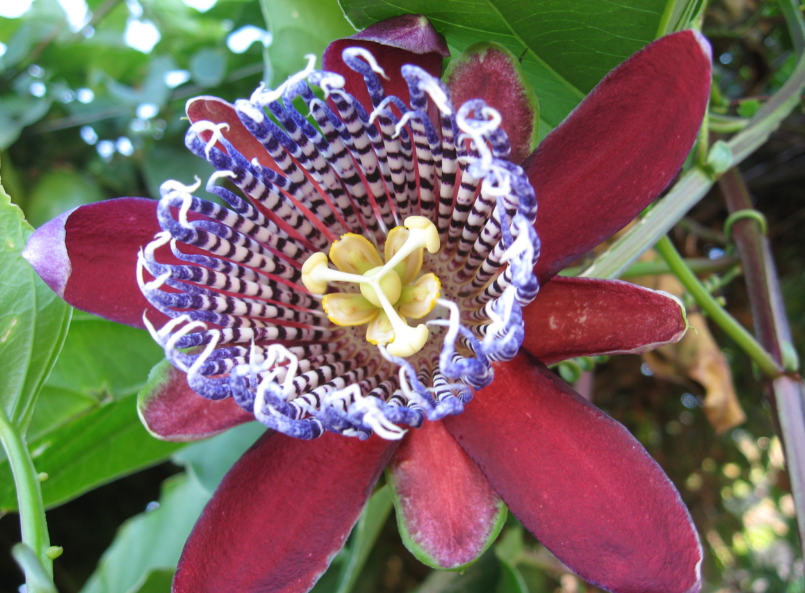This evergreen vine can grow up to 6 meters or more and produces an edible type of passion fruit. It is native to the Amazon region, ranging from Peru to eastern Brazil. The local people often refer to it as “ouvaca,” which means “red star” because of its flower’s striking appearance. Other names for this plant include fragrant grenadilla and maracuja de refresco. The name “alata” comes from the Latin word for “winged,” describing the plant’s 4-winged stems.

The leaves of Passiflora alata are oval or oblong, measuring 10-15 cm (4-6 inches) in length and 1-10 cm (0-4 inches) in width. The fragrant flowers are approximately 7-10 cm (3-4 inches) wide, boasting red curved tepals, and a prominent fringed corona with bands of purple and white, giving them a striped appearance. The plant usually blooms in late summer or early fall and requires full sun exposure. Its attractive flowers attract bees, butterflies, and birds, aiding in pollination.

The solitary fruit of Passiflora alata is highly valued by local communities. It is egg-shaped, yellow to bright orange in color, and measures 8-15 cm (3-6 inches) in length and 5-10 cm (2-4 inches) in diameter. The weight of the fruit ranges from 90 to 300 grams (3-11 ounces).

In temperate regions, Passiflora alata is often cultivated indoors, but it can also be grown outside in areas where the temperature does not drop below 5°C (41°F). The plant has received the Royal Horticultural Society’s Award of Garden Merit, recognizing its value as a garden plant.

In Brazil, Passiflora alata holds official recognition as a phytomedicine and has been included in the first edition of the Brazilian Pharmacopoeia in 1929. The plant is well-known in South American folk medicine, although its exact pharmacological composition is still not fully understood and requires further research.

